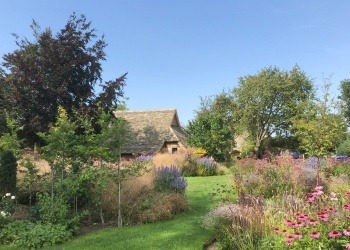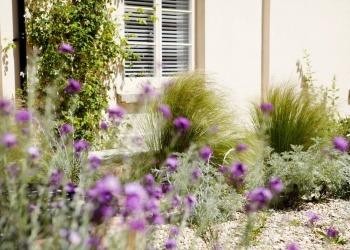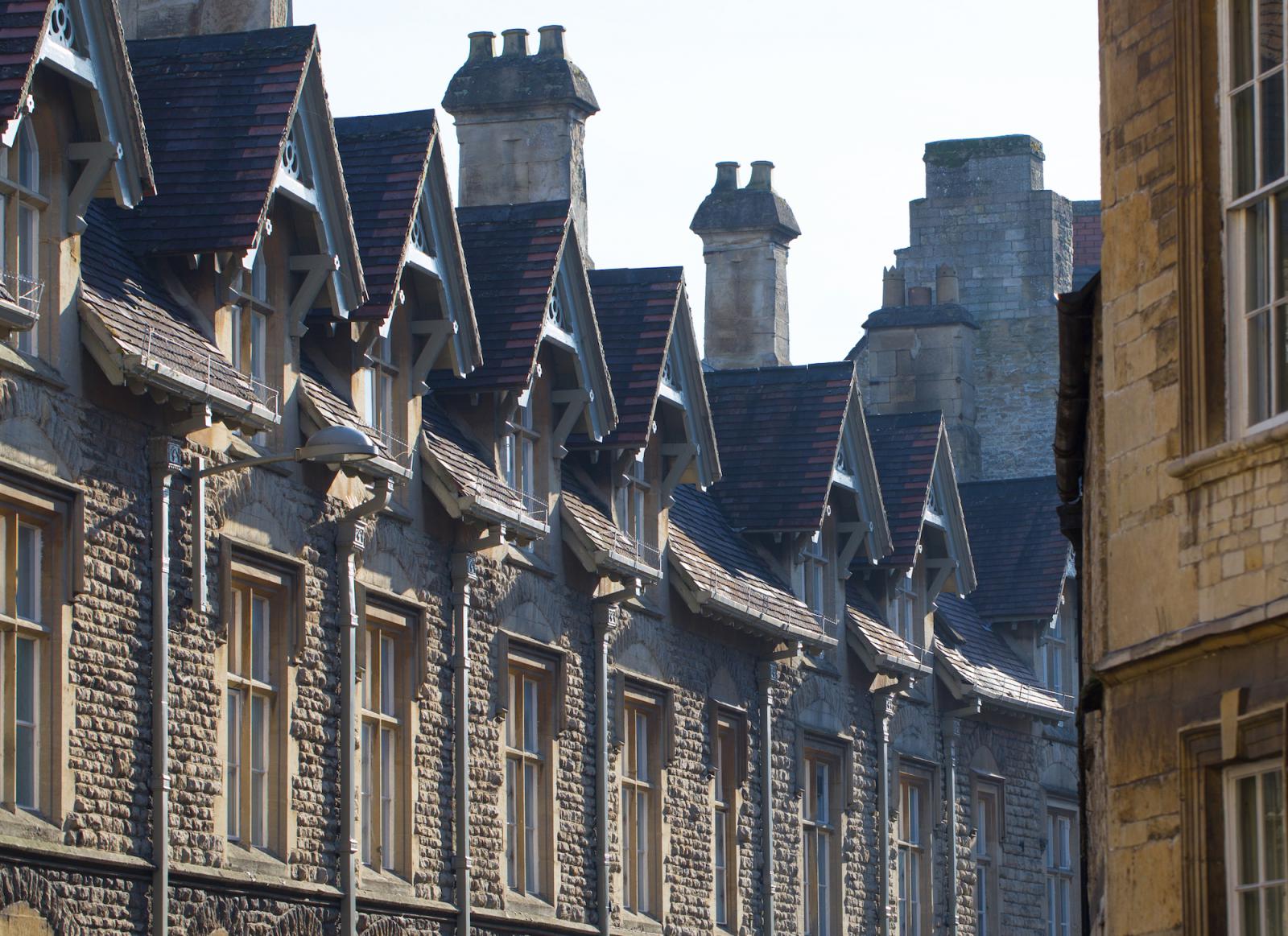We are lucky enough to be based on the edge of The Cotswolds, one of the UK’s designated Areas of Natural Beauty. With its rolling hills, chocolate box villages and houses made of honey-coloured stone, it’s not hard to see why. Anyone visiting a Cotswold village will have been won over by the beautiful gardens.
When we design Cotswolds gardens we are always aware of the impact of the landscape on the design, the two have to be unified. However small the space, a garden should be full of colour and interest, whatever the time of year. It’s an easy effect to recreate in any garden, and here are a few tips to help you do just that.
The main feature of a traditional Cotswold garden is the use of hedges to divide the space into a series of rooms, each with its own theme, feel or style. When designing a Cotswold garden this is perhaps the first thing to consider: what themes do you want to bring into the garden? The Cotswolds was perhaps the heart of the Arts and Crafts movement and you may want to bring some of the simplicity of this into one area of your garden; other rooms could become wildflower meadows, topiary mazes, lawns or colour-themed flowerbeds. There are so many themes and styles to choose and you may find inspiration from some of the famous Cotswold gardens that are open to the public, such as Hidcote Manor, Westonbirt Arboretum or HRH Prince Charles’ home at High grove.
Where the traditional Victorian English country garden was a riot of colour, with every corner filled to bursting, the Cotswold garden’s beauty is in its simplicity. In a room with flowers, stick to a simplepalette of two or three colours. Purplesand pinks create a soft, romantic feel, while a bed in shades of blue and yellow will be more striking.
Another feature of the Cotswold garden is the parterre. This is a more formal element where geometric beds, often separated by low boxwood hedges, are arranged in a symmetrical design. The limited colour palette applies here again, and the overall effect is simple yet stunning.
Topiary is a very important part of the Cotswold garden and is something fun to play with. Plant high, closely trimmed hedges – yew, hornbeam or beech are popular choices-to divide your garden rooms, clip geometric shapes or an obelisk to create a focal point, or create some whimsy with topiary animals, birds and balls!
If you have the space, a wildflower meadow is a wonderful part of any garden. Throw plenty of seeds down and let nature take its course for a display that changes throughout the year. Plant bulbs for an extra pop of colour and to make sure there’s something to see in every season – crocuses and snowdrops will be the first flowers to peek through the frosty ground, daffodils and tulips bring spring cheer and agapanthus and dahlias will provide colour well into the summer.
If you want a lawn in your Cotswold garden, make it a square one, and plant it with wide borders overflowing with flowers. Another traditional look is to have a stone path bordered by a strip of lawn and deep flowerbeds either side.
Alternatively, and if it’s safe to do so, a large pond or other water feature will provide lots of interest and bring the wildlife into your garden.
Introduce some foliage into your garden to complement the floral displays. Looks for colours that will work with the palette, or go for patterns, structure and texture that will provide a bold contrast. Ornamental vegetables are especially effective in Cotswold gardens and also give you something good to eat. A kitchen garden of raised beds is another useful feature – railway sleepers make for great retaining walls.
When it comes to the Cotswolds garden, what surrounds it is almost as important a consideration as the garden itself. Across the Cotswolds you’ll see gardens enclosed by dry stone walls, and if this is an option for you then it will be the perfect complement to the garden design. If a stone wall is not appropriate, consider picket or woven willow fencing for a more craftsy look.
Finally, the best Cotswold gardens have a folly – think Broadway Tower, or the stone temple at Barnsley House! While you may not manage to fit a temple into your own garden design, a summerhouse, glasshouse or even an arrangement of columns will feel at home here.
For any advice on your garden, do contact Louisa Jenner
T: 01993 813721
E: louisa@oxfordgardendesign.co.uk
A: 47a High Street, Witney. OX28 6JA







